Nhan Tran
Fermilab
Real-Time Cell Sorting with Scalable In Situ FPGA-Accelerated Deep Learning
Mar 16, 2025Abstract:Precise cell classification is essential in biomedical diagnostics and therapeutic monitoring, particularly for identifying diverse cell types involved in various diseases. Traditional cell classification methods such as flow cytometry depend on molecular labeling which is often costly, time-intensive, and can alter cell integrity. To overcome these limitations, we present a label-free machine learning framework for cell classification, designed for real-time sorting applications using bright-field microscopy images. This approach leverages a teacher-student model architecture enhanced by knowledge distillation, achieving high efficiency and scalability across different cell types. Demonstrated through a use case of classifying lymphocyte subsets, our framework accurately classifies T4, T8, and B cell types with a dataset of 80,000 preprocessed images, accessible via an open-source Python package for easy adaptation. Our teacher model attained 98\% accuracy in differentiating T4 cells from B cells and 93\% accuracy in zero-shot classification between T8 and B cells. Remarkably, our student model operates with only 0.02\% of the teacher model's parameters, enabling field-programmable gate array (FPGA) deployment. Our FPGA-accelerated student model achieves an ultra-low inference latency of just 14.5~$\mu$s and a complete cell detection-to-sorting trigger time of 24.7~$\mu$s, delivering 12x and 40x improvements over the previous state-of-the-art real-time cell analysis algorithm in inference and total latency, respectively, while preserving accuracy comparable to the teacher model. This framework provides a scalable, cost-effective solution for lymphocyte classification, as well as a new SOTA real-time cell sorting implementation for rapid identification of subsets using in situ deep learning on off-the-shelf computing hardware.
Loss Landscape Analysis for Reliable Quantized ML Models for Scientific Sensing
Feb 12, 2025Abstract:In this paper, we propose a method to perform empirical analysis of the loss landscape of machine learning (ML) models. The method is applied to two ML models for scientific sensing, which necessitates quantization to be deployed and are subject to noise and perturbations due to experimental conditions. Our method allows assessing the robustness of ML models to such effects as a function of quantization precision and under different regularization techniques -- two crucial concerns that remained underexplored so far. By investigating the interplay between performance, efficiency, and robustness by means of loss landscape analysis, we both established a strong correlation between gently-shaped landscapes and robustness to input and weight perturbations and observed other intriguing and non-obvious phenomena. Our method allows a systematic exploration of such trade-offs a priori, i.e., without training and testing multiple models, leading to more efficient development workflows. This work also highlights the importance of incorporating robustness into the Pareto optimization of ML models, enabling more reliable and adaptive scientific sensing systems.
End-to-end workflow for machine learning-based qubit readout with QICK and hls4ml
Jan 24, 2025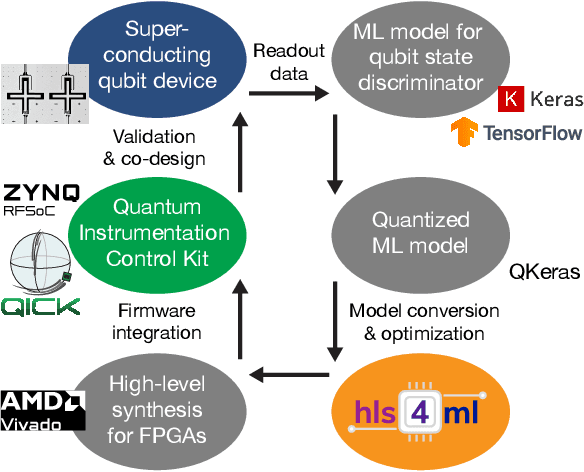
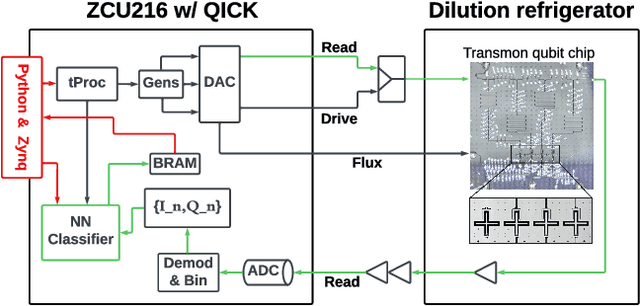
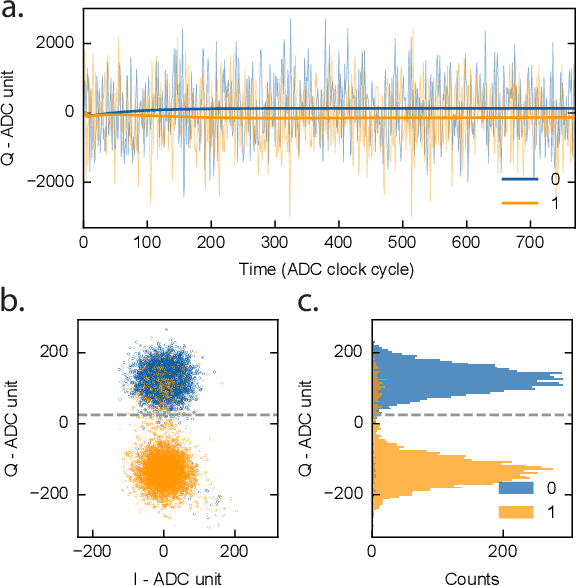

Abstract:We present an end-to-end workflow for superconducting qubit readout that embeds co-designed Neural Networks (NNs) into the Quantum Instrumentation Control Kit (QICK). Capitalizing on the custom firmware and software of the QICK platform, which is built on Xilinx RFSoC FPGAs, we aim to leverage machine learning (ML) to address critical challenges in qubit readout accuracy and scalability. The workflow utilizes the hls4ml package and employs quantization-aware training to translate ML models into hardware-efficient FPGA implementations via user-friendly Python APIs. We experimentally demonstrate the design, optimization, and integration of an ML algorithm for single transmon qubit readout, achieving 96% single-shot fidelity with a latency of 32ns and less than 16% FPGA look-up table resource utilization. Our results offer the community an accessible workflow to advance ML-driven readout and adaptive control in quantum information processing applications.
Neural Architecture Codesign for Fast Physics Applications
Jan 09, 2025



Abstract:We develop a pipeline to streamline neural architecture codesign for physics applications to reduce the need for ML expertise when designing models for novel tasks. Our method employs neural architecture search and network compression in a two-stage approach to discover hardware efficient models. This approach consists of a global search stage that explores a wide range of architectures while considering hardware constraints, followed by a local search stage that fine-tunes and compresses the most promising candidates. We exceed performance on various tasks and show further speedup through model compression techniques such as quantization-aware-training and neural network pruning. We synthesize the optimal models to high level synthesis code for FPGA deployment with the hls4ml library. Additionally, our hierarchical search space provides greater flexibility in optimization, which can easily extend to other tasks and domains. We demonstrate this with two case studies: Bragg peak finding in materials science and jet classification in high energy physics, achieving models with improved accuracy, smaller latencies, or reduced resource utilization relative to the baseline models.
Reliable edge machine learning hardware for scientific applications
Jun 27, 2024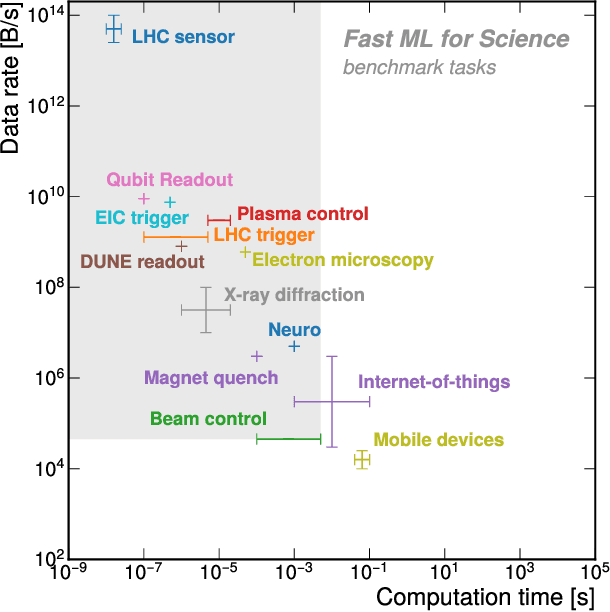
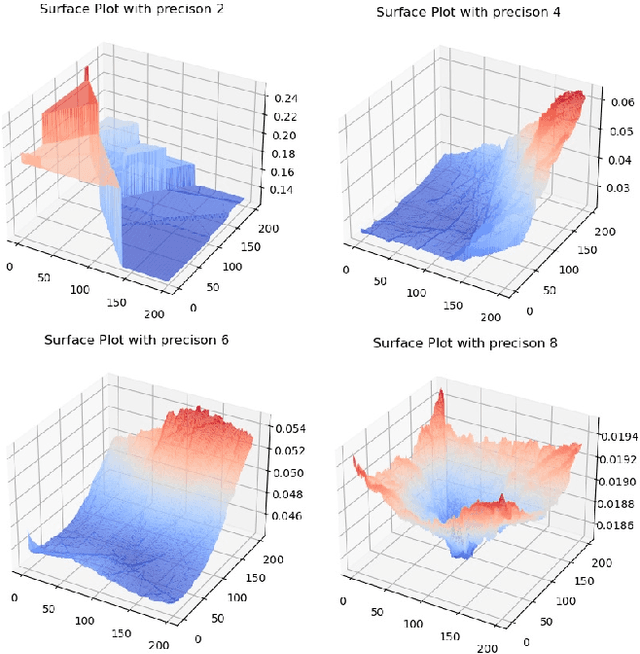
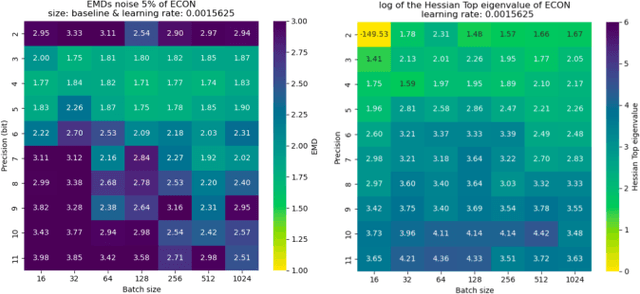
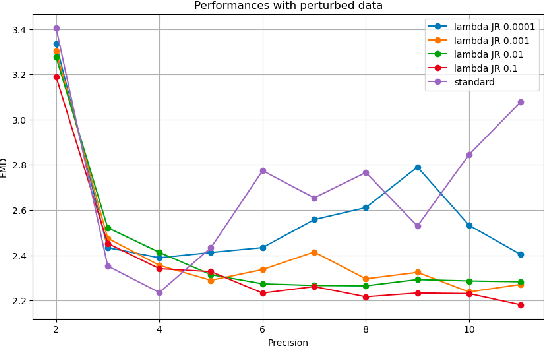
Abstract:Extreme data rate scientific experiments create massive amounts of data that require efficient ML edge processing. This leads to unique validation challenges for VLSI implementations of ML algorithms: enabling bit-accurate functional simulations for performance validation in experimental software frameworks, verifying those ML models are robust under extreme quantization and pruning, and enabling ultra-fine-grained model inspection for efficient fault tolerance. We discuss approaches to developing and validating reliable algorithms at the scientific edge under such strict latency, resource, power, and area requirements in extreme experimental environments. We study metrics for developing robust algorithms, present preliminary results and mitigation strategies, and conclude with an outlook of these and future directions of research towards the longer-term goal of developing autonomous scientific experimentation methods for accelerated scientific discovery.
Architectural Implications of Neural Network Inference for High Data-Rate, Low-Latency Scientific Applications
Mar 13, 2024


Abstract:With more scientific fields relying on neural networks (NNs) to process data incoming at extreme throughputs and latencies, it is crucial to develop NNs with all their parameters stored on-chip. In many of these applications, there is not enough time to go off-chip and retrieve weights. Even more so, off-chip memory such as DRAM does not have the bandwidth required to process these NNs as fast as the data is being produced (e.g., every 25 ns). As such, these extreme latency and bandwidth requirements have architectural implications for the hardware intended to run these NNs: 1) all NN parameters must fit on-chip, and 2) codesigning custom/reconfigurable logic is often required to meet these latency and bandwidth constraints. In our work, we show that many scientific NN applications must run fully on chip, in the extreme case requiring a custom chip to meet such stringent constraints.
Robust Anomaly Detection for Particle Physics Using Multi-Background Representation Learning
Jan 16, 2024Abstract:Anomaly, or out-of-distribution, detection is a promising tool for aiding discoveries of new particles or processes in particle physics. In this work, we identify and address two overlooked opportunities to improve anomaly detection for high-energy physics. First, rather than train a generative model on the single most dominant background process, we build detection algorithms using representation learning from multiple background types, thus taking advantage of more information to improve estimation of what is relevant for detection. Second, we generalize decorrelation to the multi-background setting, thus directly enforcing a more complete definition of robustness for anomaly detection. We demonstrate the benefit of the proposed robust multi-background anomaly detection algorithms on a high-dimensional dataset of particle decays at the Large Hadron Collider.
Beyond PID Controllers: PPO with Neuralized PID Policy for Proton Beam Intensity Control in Mu2e
Dec 28, 2023

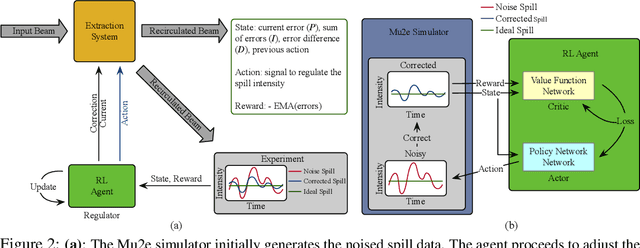

Abstract:We introduce a novel Proximal Policy Optimization (PPO) algorithm aimed at addressing the challenge of maintaining a uniform proton beam intensity delivery in the Muon to Electron Conversion Experiment (Mu2e) at Fermi National Accelerator Laboratory (Fermilab). Our primary objective is to regulate the spill process to ensure a consistent intensity profile, with the ultimate goal of creating an automated controller capable of providing real-time feedback and calibration of the Spill Regulation System (SRS) parameters on a millisecond timescale. We treat the Mu2e accelerator system as a Markov Decision Process suitable for Reinforcement Learning (RL), utilizing PPO to reduce bias and enhance training stability. A key innovation in our approach is the integration of a neuralized Proportional-Integral-Derivative (PID) controller into the policy function, resulting in a significant improvement in the Spill Duty Factor (SDF) by 13.6%, surpassing the performance of the current PID controller baseline by an additional 1.6%. This paper presents the preliminary offline results based on a differentiable simulator of the Mu2e accelerator. It paves the groundwork for real-time implementations and applications, representing a crucial step towards automated proton beam intensity control for the Mu2e experiment.
Neural Architecture Codesign for Fast Bragg Peak Analysis
Dec 12, 2023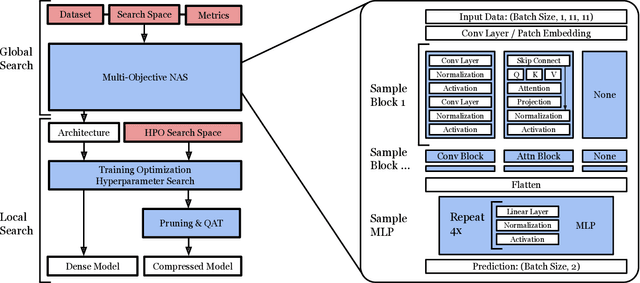

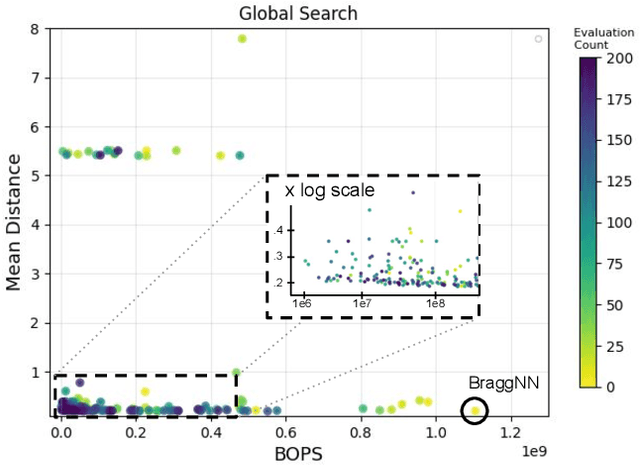
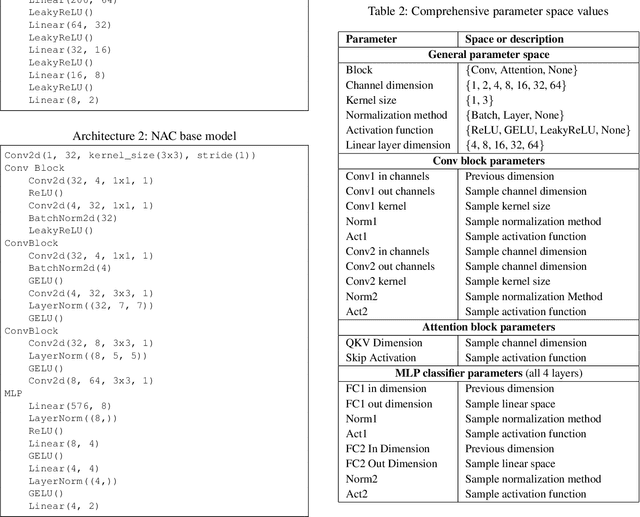
Abstract:We develop an automated pipeline to streamline neural architecture codesign for fast, real-time Bragg peak analysis in high-energy diffraction microscopy. Traditional approaches, notably pseudo-Voigt fitting, demand significant computational resources, prompting interest in deep learning models for more efficient solutions. Our method employs neural architecture search and AutoML to enhance these models, including hardware costs, leading to the discovery of more hardware-efficient neural architectures. Our results match the performance, while achieving a 13$\times$ reduction in bit operations compared to the previous state-of-the-art. We show further speedup through model compression techniques such as quantization-aware-training and neural network pruning. Additionally, our hierarchical search space provides greater flexibility in optimization, which can easily extend to other tasks and domains.
Low latency optical-based mode tracking with machine learning deployed on FPGAs on a tokamak
Nov 30, 2023Abstract:Active feedback control in magnetic confinement fusion devices is desirable to mitigate plasma instabilities and enable robust operation. Optical high-speed cameras provide a powerful, non-invasive diagnostic and can be suitable for these applications. In this study, we process fast camera data, at rates exceeding 100kfps, on $\textit{in situ}$ Field Programmable Gate Array (FPGA) hardware to track magnetohydrodynamic (MHD) mode evolution and generate control signals in real-time. Our system utilizes a convolutional neural network (CNN) model which predicts the $n$=1 MHD mode amplitude and phase using camera images with better accuracy than other tested non-deep-learning-based methods. By implementing this model directly within the standard FPGA readout hardware of the high-speed camera diagnostic, our mode tracking system achieves a total trigger-to-output latency of 17.6$\mu$s and a throughput of up to 120kfps. This study at the High Beta Tokamak-Extended Pulse (HBT-EP) experiment demonstrates an FPGA-based high-speed camera data acquisition and processing system, enabling application in real-time machine-learning-based tokamak diagnostic and control as well as potential applications in other scientific domains.
 Add to Chrome
Add to Chrome Add to Firefox
Add to Firefox Add to Edge
Add to Edge